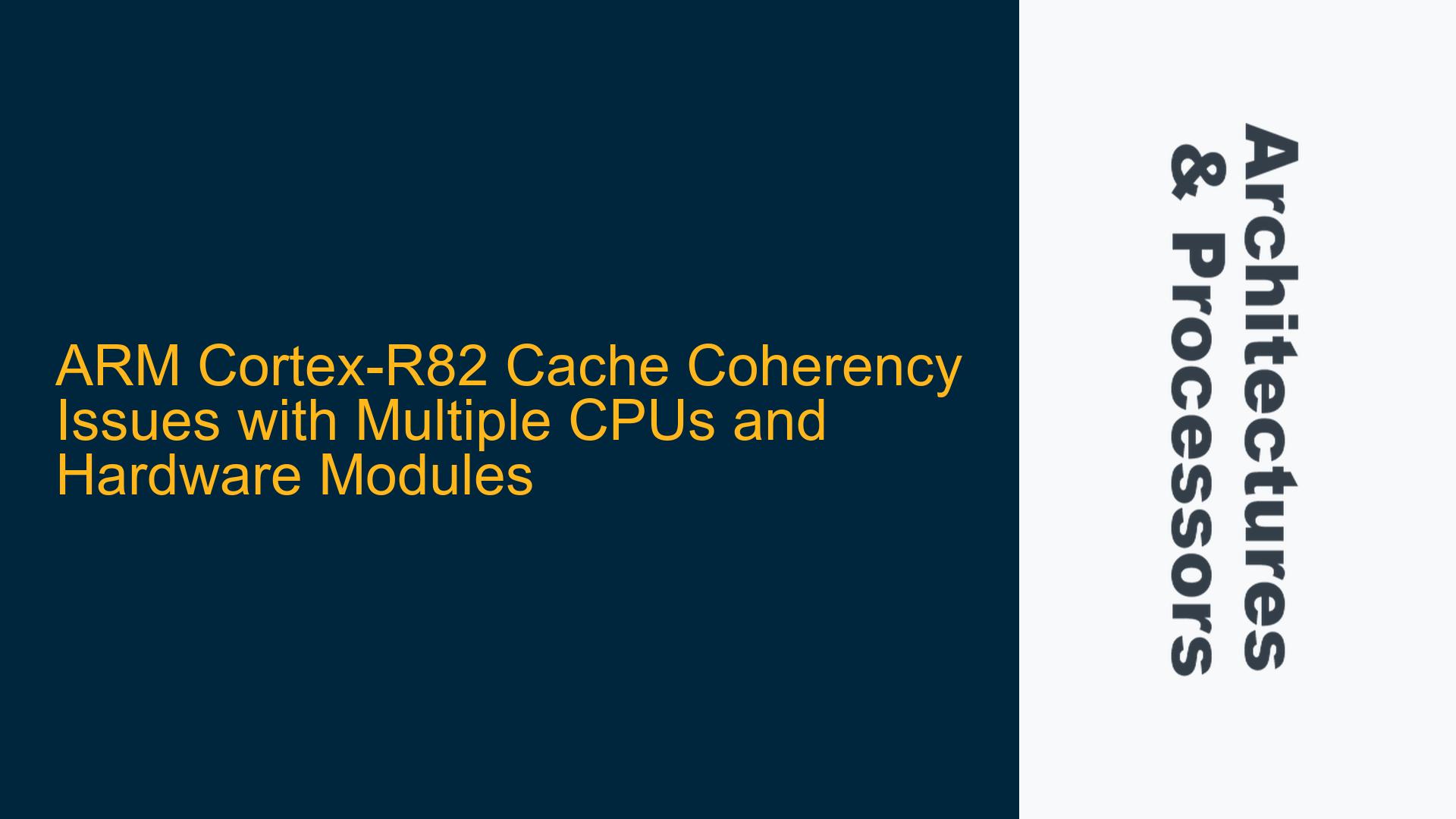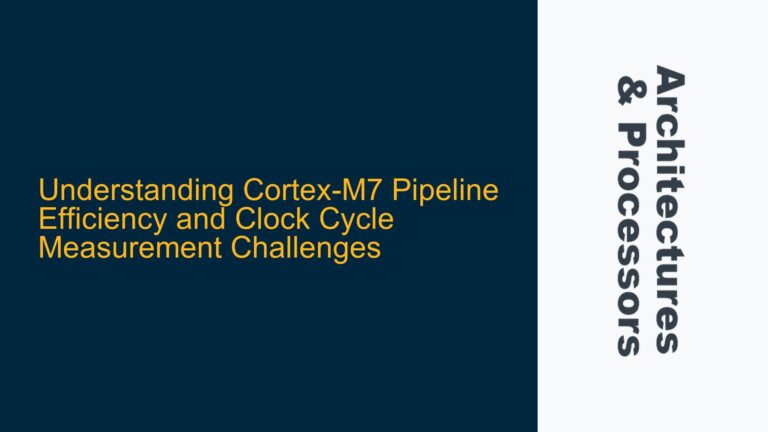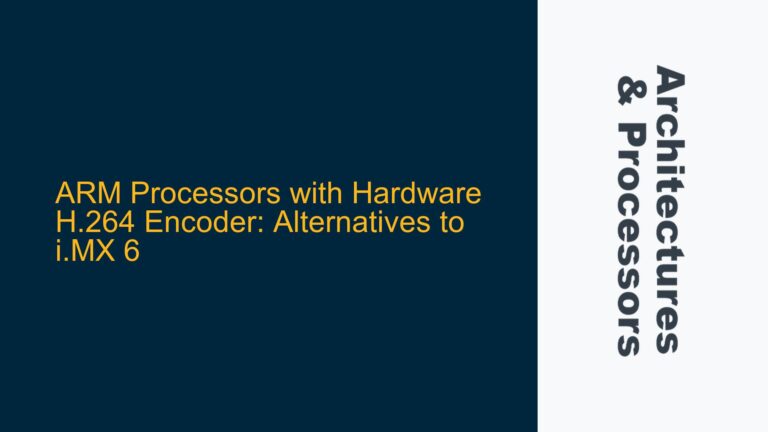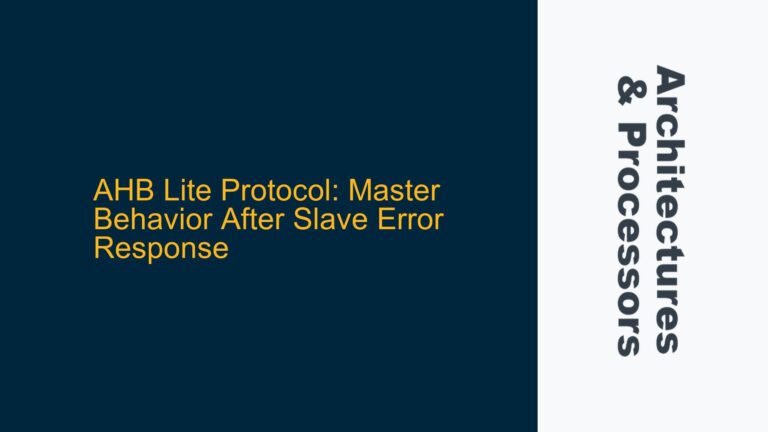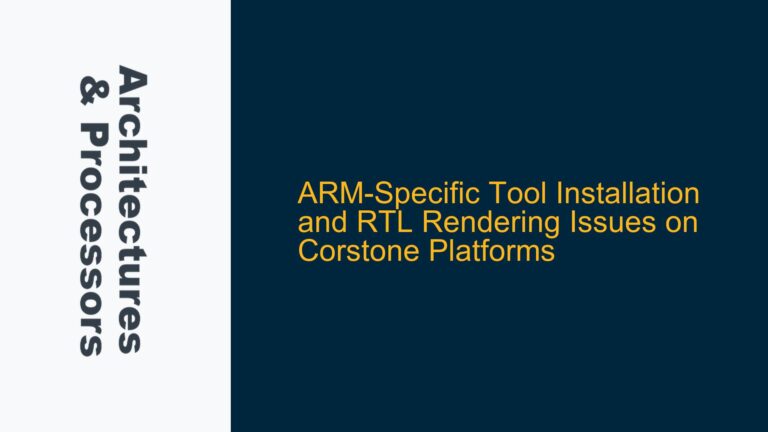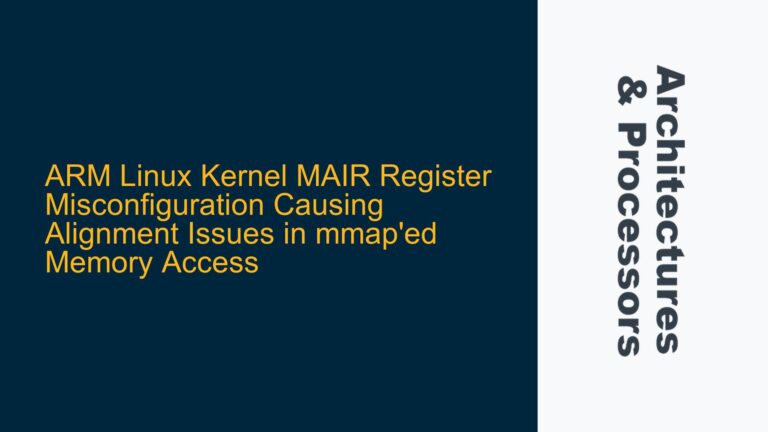ARM Cortex-R82 Cache Coherency Challenges in Multi-CPU and Multi-Hardware Module Systems
The ARM Cortex-R82 processor, designed for real-time and high-performance embedded applications, presents unique challenges when it comes to maintaining cache coherency in systems with multiple CPUs and hardware modules. The Cortex-R82 features an ACE5-Lite interface, which is critical for ensuring data consistency across different processing units and hardware accelerators. However, when the Cortex-R82 is integrated into a system with multiple independent CPUs (each with their own caches) or hardware modules without caches, ensuring coherency becomes a non-trivial task. This post delves into the intricacies of cache coherency in such systems, exploring the underlying issues, potential causes, and detailed solutions to ensure reliable operation.
Cache Coherency Mechanisms in Cortex-R82 with ACE5-Lite Interface
The Cortex-R82 processor supports two primary interfaces for external communication: AXI and CHI-E. The CHI-E interface, when used with a coherent interconnect, enables hardware coherency across multiple Cortex-R82 clusters or even Cortex-A clusters. However, the ACE5-Lite interface, which is a subset of the ACE protocol, is specifically designed for I/O coherency. It allows external agents, such as hardware accelerators or other CPUs, to maintain coherency with the Cortex-R82’s L1 and L2 caches.
When the Cortex-R82 is operating in a system with multiple CPUs, each with its own cache, the primary challenge is ensuring that all caches have a consistent view of shared memory. This is particularly important in multi-core systems where different CPUs may be accessing and modifying the same memory locations simultaneously. The Cortex-R82’s L2 memory system is responsible for maintaining coherency within its own cluster, but when external CPUs are involved, additional mechanisms are required.
In systems where the Cortex-R82 interacts with hardware modules that lack caches, the challenge shifts to ensuring that these modules have a consistent view of memory. Since these modules do not have caches, they rely on the Cortex-R82’s cache coherency mechanisms to ensure that they are accessing the most up-to-date data. This is where the ACE5-Lite interface plays a crucial role, as it allows these hardware modules to participate in the coherency protocol.
Potential Causes of Cache Coherency Issues in Cortex-R82 Systems
Cache coherency issues in Cortex-R82 systems can arise from several sources, including improper configuration of the ACE5-Lite interface, lack of synchronization between different CPUs, and incorrect handling of memory barriers. One of the most common causes of coherency issues is the omission of memory barriers. Memory barriers are essential for ensuring that memory operations are performed in the correct order, especially in multi-core systems where different CPUs may be executing instructions out of order.
Another potential cause of coherency issues is the improper configuration of the Cortex-R82’s cache coherency mechanisms. The Cortex-R82 provides several configuration options for its cache coherency protocols, including the ability to enable or disable coherency for specific memory regions. If these configurations are not set correctly, it can lead to situations where some CPUs or hardware modules have an inconsistent view of memory.
In systems where the Cortex-R82 is interacting with hardware modules that lack caches, coherency issues can arise if the ACE5-Lite interface is not properly utilized. The ACE5-Lite interface allows these hardware modules to participate in the coherency protocol, but if the interface is not configured correctly, the hardware modules may not be able to access the most up-to-date data.
Finally, coherency issues can also arise from the design of the system itself. For example, if the system uses a non-coherent interconnect between the Cortex-R82 and other CPUs or hardware modules, it can lead to situations where different components have inconsistent views of memory. In such cases, additional software-based coherency mechanisms may be required to ensure data consistency.
Implementing Cache Coherency Solutions for Cortex-R82 Systems
To address cache coherency issues in Cortex-R82 systems, it is essential to implement a combination of hardware and software solutions. The first step is to ensure that the Cortex-R82’s cache coherency mechanisms are properly configured. This includes enabling coherency for all relevant memory regions and ensuring that the ACE5-Lite interface is correctly set up to allow external agents to participate in the coherency protocol.
In systems with multiple CPUs, it is crucial to implement proper synchronization mechanisms to ensure that all CPUs have a consistent view of memory. This can be achieved through the use of memory barriers, which ensure that memory operations are performed in the correct order. Memory barriers should be placed at strategic points in the code, particularly around critical sections where multiple CPUs may be accessing shared memory.
For systems where the Cortex-R82 interacts with hardware modules that lack caches, it is important to ensure that the ACE5-Lite interface is properly utilized. This includes configuring the interface to allow these hardware modules to participate in the coherency protocol and ensuring that they have access to the most up-to-date data. In some cases, it may also be necessary to implement software-based coherency mechanisms, such as cache flushing or invalidation, to ensure data consistency.
In addition to these hardware and software solutions, it is also important to carefully design the system to ensure that all components have a consistent view of memory. This includes using a coherent interconnect between the Cortex-R82 and other CPUs or hardware modules, and ensuring that all memory accesses are properly synchronized.
Detailed Steps for Ensuring Cache Coherency in Cortex-R82 Systems
-
Configure the Cortex-R82’s Cache Coherency Mechanisms: Ensure that coherency is enabled for all relevant memory regions and that the ACE5-Lite interface is properly configured to allow external agents to participate in the coherency protocol.
-
Implement Memory Barriers: Use memory barriers to ensure that memory operations are performed in the correct order, particularly around critical sections where multiple CPUs may be accessing shared memory.
-
Utilize the ACE5-Lite Interface: Ensure that the ACE5-Lite interface is properly utilized to allow hardware modules without caches to participate in the coherency protocol and access the most up-to-date data.
-
Implement Software-Based Coherency Mechanisms: In some cases, it may be necessary to implement software-based coherency mechanisms, such as cache flushing or invalidation, to ensure data consistency.
-
Design the System for Coherency: Carefully design the system to ensure that all components have a consistent view of memory, including using a coherent interconnect and properly synchronizing all memory accesses.
Example Configuration for Cortex-R82 Cache Coherency
Below is an example configuration for ensuring cache coherency in a Cortex-R82 system with multiple CPUs and hardware modules:
| Configuration Parameter | Value | Description |
|---|---|---|
| Coherency Enable | Enabled | Enable coherency for all relevant memory regions. |
| ACE5-Lite Interface Configuration | Coherent | Configure the ACE5-Lite interface to allow external agents to participate in coherency. |
| Memory Barrier Placement | Around critical sections | Place memory barriers around critical sections where multiple CPUs access shared memory. |
| Cache Flushing/Invalidation | As needed | Implement cache flushing or invalidation as needed to ensure data consistency. |
| Interconnect Type | Coherent | Use a coherent interconnect between the Cortex-R82 and other CPUs or hardware modules. |
Conclusion
Ensuring cache coherency in ARM Cortex-R82 systems with multiple CPUs and hardware modules is a complex but essential task. By properly configuring the Cortex-R82’s cache coherency mechanisms, implementing memory barriers, utilizing the ACE5-Lite interface, and designing the system for coherency, it is possible to achieve reliable and consistent operation. The key is to carefully analyze the system’s requirements and implement the appropriate combination of hardware and software solutions to address the specific coherency challenges that arise. With the right approach, the Cortex-R82 can be effectively integrated into multi-CPU and multi-hardware module systems, ensuring that all components have a consistent view of memory and operate seamlessly together.
